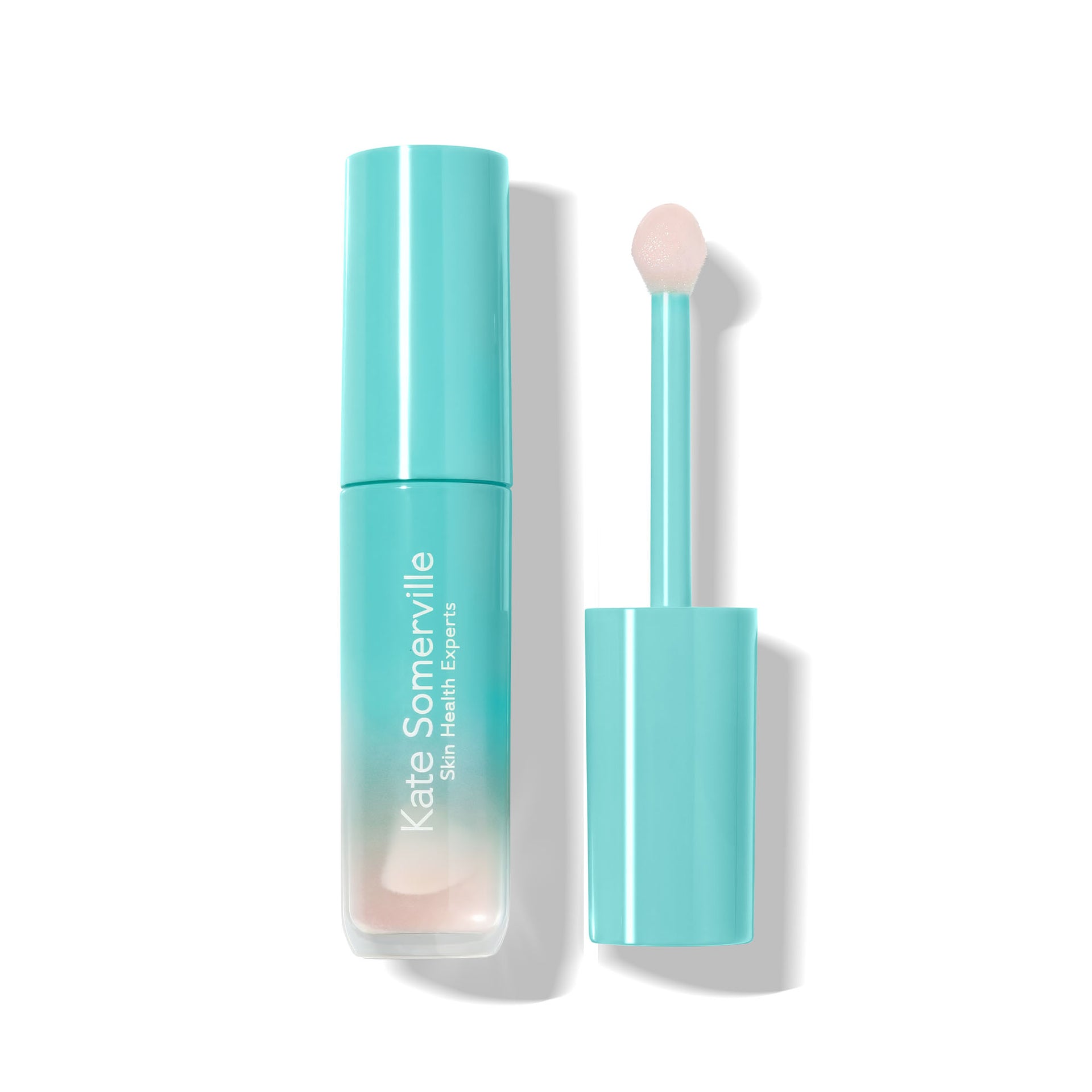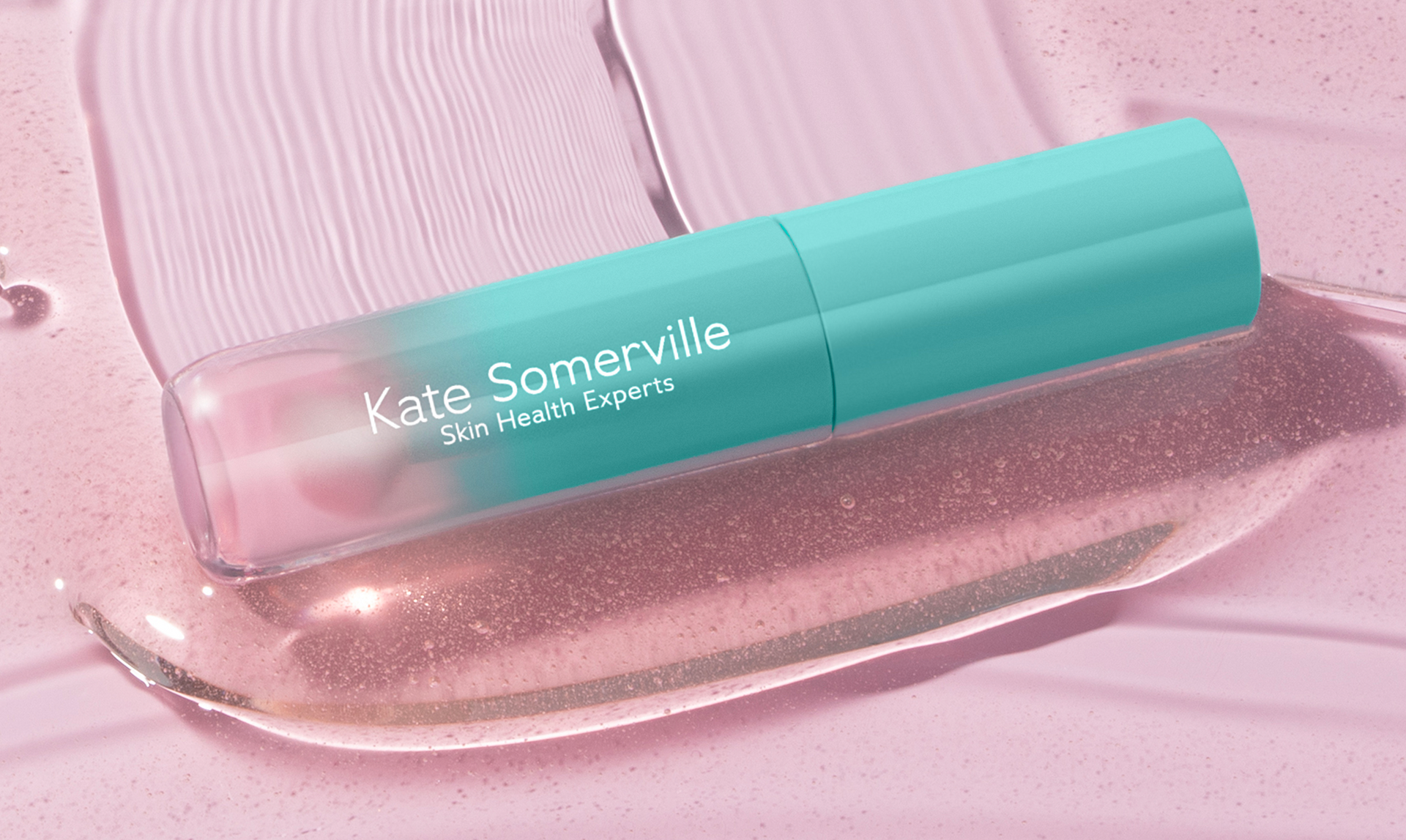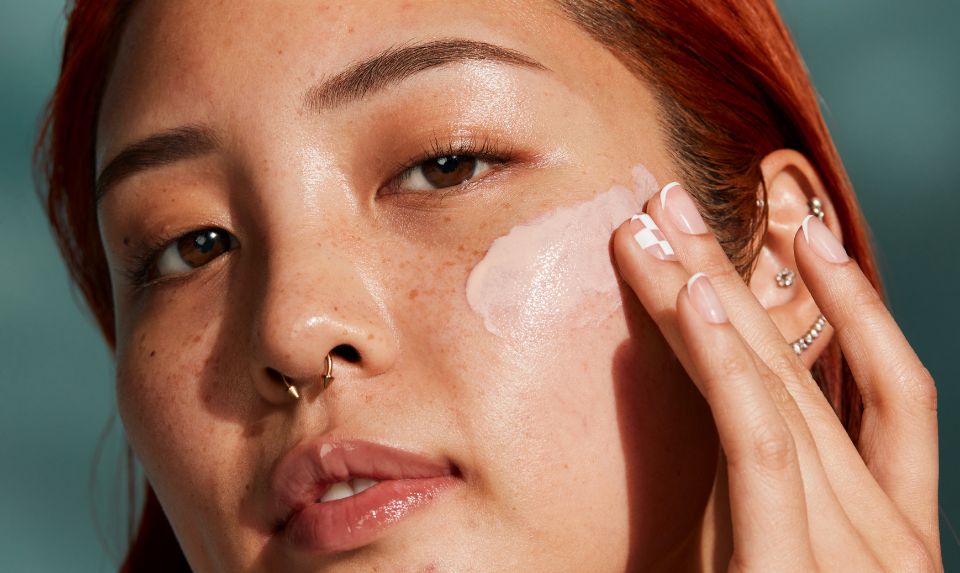Whether you are skincare obsessed like we are or dabble here in there with new products or ingredients, you probably agree that skincare is far from one-size-fits-all. You probably also believe that the only way to know if a product or ingredient will work for you is to try it yourself. And yet, sometimes it can feel daunting to try something new.
While the word acid may seem intimidating, acids provide enormous benefits for your skin when used at the proper concentrations. In the world of skincare, acids are most commonly used for acne, diminish the look of wrinkles, reduce the appearance of age spots and scarring, and even skin tone. They are also an essential part of a skincare routine.
To help you incorporate the right acids into your skincare routine, our Kate Somerville Skin Health Experts have put together this guide covering two of the most common acids used—lactic acid and salicylic acid—and the differences between each. Keep reading to discover more about lactic acid vs salicylic acid and how you can revamp your skincare regimen to begin looking and feeling better than ever.
What is Lactic Acid?
Lactic acid is an alpha hydroxy acid (AHA) that is extracted from milk. However, when used in cosmetics, lactic acid is often synthesized to create a more stable and easily formulated skincare ingredient. Its water-binding and exfoliating properties work to diminish many mild skin texture issues like hyperpigmentation or dark spots.1 Lactic acid doesn't penetrate the pores as profoundly as other acids, meaning that it's best used to address surface skin issues, including firmness and texture. While most people can use AHAs with little to no side effects, those with sensitive skin should slowly introduce lactic acid products to avoid irritation.
What Skin Type is Lactic Acid Best For?
When used at the right concentration, lactic acid is suitable for all skin types. Generally, it's recommended that lactic acid be used in strength ranging from 5-8%. Pairing AHAs like lactic acid with hydrating ingredients like hyaluronic acid to boost the product's effectiveness while minimizing potential irritation. Individuals with normal to dry, dehydrated, sun-damaged, or breakout-prone skin will benefit the most from adding lactic acid to their skincare regimen. Additionally, many skincare products will combine AHAs and BHAs (salicylic acid) to make the product more effective.
What is Salicylic Acid?
While salicylic acid and lactic acid are similar, salicylic acid is not an AHA. Instead, salicylic acid is a beta-hydroxy acid (BHA) and is used as a chemical exfoliator to help reduce acne-causing bacteria and unclog pores. It's naturally found in willow bark and wintergreen leaves. However, when used in skincare products, it's generally artificially synthesized in a lab. The mild skin soothing properties of salicylic acid make it ideal for smoothing and exfoliating skin while visibly shrinking enlarged pores to reduce signs of aging.2 Unlike lactic acid, salicylic acid is oil-soluble and can penetrate into the pore lining, breaking up the bacteria and dead skin cells that clog pores. Applying it directly to your skin can also exfoliate dead, dull skin cells on the surface. For acne-prone skin, products like our EradiKate® Salicylic Acid Acne Treatment combine a 2% salicylic acid with retinol to clear and prevent breakouts while also visibly reducing pores and evening skin texture in just 24 hours.
What Skin Type is Salicylic Acid Best For?
Like lactic acid, salicylic acid can be used on all skin types. However, it works best for individuals with normal to oily or combination skin types. Skin prone to blackheads, breakouts, clogged pores, and redness will also benefit from salicylic acid. A gentle option for sensitive skin, it's best to look for products with a strength ranging from 1-2%. Additionally, to help reduce signs of irritation and aging, if you’re using a product with salicylic acid, you should also be applying sunscreen like the HydraKate Illuminating SPF 50+ Drops as well as hydrating products like Wrinkle Warrior® Eye Gel.
Lactic Acid vs Salicylic Acid: When to Choose Each
We recommend incorporating both lactic acid and a hydrating product like our Wrinkle Warrior® Hydration Gel into your simple skincare routine for breakout-prone and dehydrated skin. Doing so will help remove surface skin issues without damaging or drying out the skin.
However, for individuals with oily or combination skin, salicylic acid is often the better choice. Daily use products like our Eradikate® Daily Foaming Cleanser will work to keep breakouts at bay by clearing current acne, unclogging pores, and balancing oily skin.
Whether you choose to begin using lactic acid or salicylic acid or both, it's important to pay attention to your skin's needs and combine them with other skincare products that boost effectiveness, minimize irritation and provide overall protection. To protect your skin from sun damage, all skincare acids should be used in combination with a daily sunscreen like the HydraKate Illuminating SPF 50+ Drops. Remember, everyone's skincare journey is unique. Finding the right products and ingredients for you – based on your skin type, age, where you live, and your specific skin concerns – is deeply personal. If you’d like help creating a custom skincare regimen, our Skin Health Experts are here for you. Book a virtual clinic on-call consultation or come visit us in the clinic. We’d love to see you!
Sources:

















